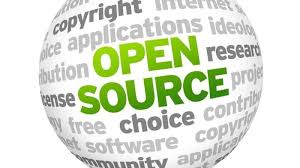
What is Open Source
When the source code for a company’s product is freely available or open via the internet, to view, copy or build an alternative version making any changes required, it can be termed open source. There are often licence restrictions regarding commercial reuse in a similar capacity but aside from that access and usage is unrestricted. Companies may be contributors publishing their own code, users consuming the work of others, or both.
Talend is committed to open source as both contributor and user. The product is built on top of a number of open-source products administered via the Apache and Eclipse foundations. Talend specific code is publicly available for reuse subject to open licence constraints.
A principle of open-source usage expects companies to offer a community edition of their product, containing a large proportion of core functionality, free of charge and unlimited in use.
Open-Source Benefits
To the user the benefits are fairly obvious, licence free access to full versions of the product but what is the driving force behind companies adopting the open-source paradigm? At first glance the idea of giving away your expensively developed core product seems counter intuitive so let’s look at the reasons that make this attractive.
1 Additional resource from voluntary contributors.
Often cited as the main benefit this can have a downside needing control to maintain consistency and standards. There is a danger of of well-meaning volunteers colliding in their aspirations if solid principles of governance are not applied. Experienced companies will have strong management and rigorous selection procedures even for voluntary contributors.
2 Beliefs of the founders
The company may have been founded by one or more people who firmly believe in open-source principles and ensure their developmental procedures follow the same path.
3 Attract the best developers
Many talented developers attach great importance to publicly demonstrating their work when providing code. Encouraging staff to be open-source contributors as part of their daily work makes the company an attractive option when seeking additional technical resource.
4 The real money is in the add one.
This is the major revenue earner focussing primarily on support. Most companies with a community product will offer a subscription-based version, usually called an enterprise version, which has full support included. There may be enhancements that are not present in the community version, Talend for instance has a lot of additional features around deployment and administration plus parallel processing, but the key factor is the vendor support with associated SLAs.
Why Pay When it’s Free
Talend community products are fully featured and work without limitation. The retail proof of concept was built and deployed entirely in the community version so it is possible to run commercially using this version but what are the pitfalls of working in this way?
1 Ethical Considerations
Just because you can doesn’t mean you should. If no one is paying for the enterprise version, the commercial validity of the open-source model is compromised. Companies will no longer be able to work this way and community editions cease to exist. Clients have a responsibility to pay for software when circumstances allow in order to perpetuate the mechanism and ensure future availability of high-quality software for evaluation or proof of concept purposes.
2 Availability
When using a community version of a product you have not entered into a contract with the vendor and they are under no obligation to continue providing the service. Products may be deprecated or removed entirely, possibly compromising your own environment.
3 Security
A knock on from the previous point, vendors are under no obligation to provide security patches. Where they are provided cancellation without notice is a possibility.
4 Support
Of most importance to senior management and company auditors will be vendor support. Community editions may have support forums such as Talend Forge but there are no guaranteed escalation protocols to solve issues. The enterprise edition offers phone and on-line support including 2nd and 3rd line, service level agreements and account management to minimise any risks to uptime. An IT director or CIO who oversees an integration system which could contribute to a loss of revenue directly attributable to failure in unsupported software, is risking a career limiting scenario.
5 Additional Productivity Features
The community version may be a fully working product but that doesn’t mean some of the tasks are not optimised for production. Deployment and management can be managed to a degree via command line utilities but it is significantly more productive via the graphical interface TAC built into the commercial version. A few other significant additions are:
- Parallel Processing Components
- Joblets and Routelets
- Publish and Deploy from Studio
Conclusion
Talend community edition versions are a superb way to learn the product and produce proof of concept demonstrations. They may also be useful for some small scale production trialling but once they become a core part of your infrastructure it would be unwise and possibly negligent not to upgrade to the enterprise version.

